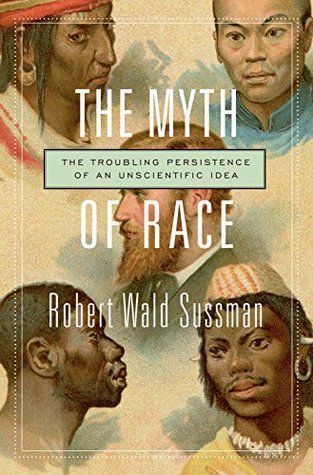More on this book
Kindle Notes & Highlights
Started reading
May 14, 2020
In 1950, UNESCO issued a statement asserting that all humans belong to the same species and that “race” is not a biological reality but a myth.
One day in the 1980s, I sat in the front row in my first undergraduate anthropology class, eager to learn more about this bizarre and fascinating species I was born into. But I got more than I expected that day as I heard for the first time that biological races are not real. After hearing several perfectly sensible reasons why vast biological categories don’t work very well, I started to feel betrayed by my society. “Why am I just hearing this now?… Why didn’t somebody tell me this in elementary school?” … I never should have made it through twelve years of schooling before entering a
...more
Even if you are not a racist, your life is affected by this ordered structure. We are born into a racist society. What many people do not realize is that this racial structure is not based on reality. Anthropologists have shown for many years now that there is no biological reality to human race.
However, over the past
500 years, we have been taught by an informal, mutually reinforcing consortium of intellectuals, politicians, statesmen, business and economic leaders, and their books that human racial biology is real and that certain races are biologically better than others.
Many of our basic policies of race and racism have been developed as a way to keep these leaders and their followers in control of the way we live our modern lives.
Spanish Inquisition,
Nazism,
United States
Western Europe
Over the past 500 or so years, many intellectuals and their books have created our story of racism.
How did populations evolve over time and how isolated were they in the past?
Homo sapiens
We humans are more similar to each other as a group than we are to one another within any particular racial or genetic category. Many anthropological books have been written to explain this phenomenon (for recent examples see Tattersall and DeSalle 2011; Smedley and Smedley 2012; Relethford 2013; Jurmain et al. 2014; and Mukhopadhyay, Henze, and Moses 2014).
(Berkowitz 1999; Weiss and Buchanan 2009; Charney 2013).
Do the criteria used in describing these variations hold when we examine human population variation? In biological terms, the concept of race is integrally bound to the process of evolution and the origin of species.
In biology, a species is defined as a population of individuals who are able to mate and have viable offspring; that is, offspring who are also successful in reproducing.
Because of the extensive evidence for genetic interchange through population movements and recurrent gene flow going back at least hundreds of thousands of years ago, there is only one evolutionary lineage of humanity and there are no subspecies or races.… Human evolution and population structure has been and is characterized by many locally differentiated populations coexisting at any given time, but with sufficient contact to make all of humanity a single lineage sharing a common, long-term evolutionary fate.
given current scientific data, biological races do not exist among modern humans today,
existed in the past.
how can the “myth” of human races still persist?
In fact, even though biological races do not exist, the concept of race obviously is still a reality, as is racism.
scientific racism
the pre-Adamite and the degenerate views of human racial variation.
terms polygenism and monogenism, respectively.
Darwin’s time, the eugenics movement, Nazism,
will also explore why some very early views of race based on ignorance, emotion, hatred, intolerance, and prejudice have been repeated, almost verbatim, through the ages.
Early Christians, Hebrews, and the Greeks allowed out-groups to overcome their alleged inferiority by converting to the “superior” or dominant group, or through the process of assimilating (Longhurst 1964).
The conquistadores justified their maltreatment of Native Americans by claiming they were subhuman and incapable of having abstract ideas and of running their own world. They also were deemed incapable of morality and unable to become Christian.
The two main theories used to explain human differences, pre-Adamite and degenerate, that the Spanish and Portuguese had first proposed in the sixteenth century were later adopted mainly by the English, Anglo-Americans, and the French in the seventeenth and eighteenth centuries.
Although the pre-Adamite or polygenic theory had a following throughout the period covered here and became the dominant theory in the mid-nineteenth century, the degeneration theory of race was the most accepted version in earlier times.
This was, in fact, the more liberal point of view, since proponents of this approach believed that these degenerates could be remediated by giving them the benefits of European education and “culture,” especially by missionizing them to Christianity.
earliest well-known proponents of the degeneration theory was John Locke. Locke was the seventeenth-century architect of English colonial policy who drafted the constitution for the Carolinas.
(Locke 1690).
specialist in botany.
Using this concept, Linnaeus published twelve editions of his famous Systema Naturae during his lifetime, and in the tenth edition (1758)
(The first edition was published in 1735, before Linnaeus was thirty years old.)
Thus, he devised the term Homo sapiens for humans and, in fact, considered all humans to be members of the same species.


